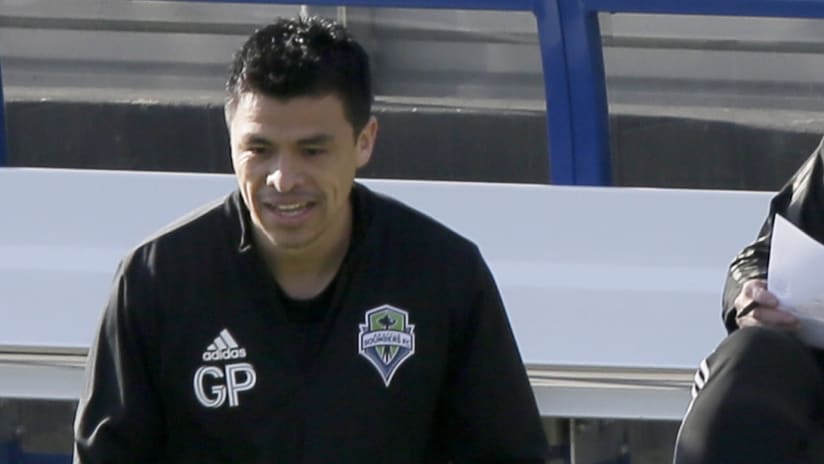HANOVER, N.J. – After taking seven of the first nine available points, Jesse Marsch and the New York Red Bulls will look to continue their early season success as they travel down I-95 to take on D.C. United for the rivals' second meeting of the season on Saturday evening (7 pm ET, MLS LIVE). Just how do they plan on continuing to earn results?
Keep teams guessing.
Following an offseason that saw plentiful changes both on and off the pitch, one of the key holdovers from the 2014 side was not a player nor a staff member, but the team's 4-2-3-1 formation, even if some of the details have varied from the tactic favored by previous head coach Mike Petke. With Marsch at the helm, the Red Bulls have added a new sophistication to their game in the hopes of keeping the opposition on their toes.
“We’re trying to create attacking movements so that our players’ movements are not so easy to predict,” Marsch said. “We’re trying to create cues in the game that give them a sense of where the next play should be and how to move in that manner. They’re also very smart. They’re very good at picking up on cues in the game and so it’s meant that we have flexibility in the attack, which is what we want. We don’t want to just be one-dimensional in the attack; we want to be able to use our guys to do several different things, coordinated together. That part’s been good, and they’ve adjusted well.”
Forward Bradley Wright-Phillips has been the subject of some of those adjustments, and though it may seem odd to tinker with the role of a player who found the back of the net a record 27 times last season, that’s just what Marsch has done. No longer just a target striker, Wright-Phillips has frequently dropped deeper into the midfield to collect the ball and display some of his playmaking skills.
“Jesse gave me some tips on what to do,” Wright-Phillips told MLSsoccer.com. “He wanted me to come back a bit more because in the first game [against Kansas City], I was being a bit too – I wouldn’t say lazy – I wasn’t getting my retention line right, where I should start.
“The position he wants me to be in is a bit deeper, so that when we win the ball back I’m in areas to pick up the ball and start the attack. It’s something I wanted to work on from last season because, as we know, I got goals, but I didn’t get many assists. I wasn’t happy with my all-around game. It’s something I’ve wanted to do personally, try to get involved more and help assist or start plays.”
The results have been hard to argue with, as the Designated Player has already matched his assist total of two from 2014 in just three games this season.
As the season progresses, opposing coaches will have more and more game footage to break down New York’s tactics and find weaknesses. But Marsch believes that New York’s bevy of moving parts coupled with their unpredictability in the attack will make his side a tough team to game plan against.
“We definitely want [outside backs Kemar Lawrence and Chris Duvall] to join in in the attack and find width and be aggressive to join in,” Marsch added. “They’re both good at that. It’s a way to unbalance the other team because they’re not sure if they should deal with the man coming into the inside or whether they should deal with the runner going to the outside. D.C. with their 4-4-2 or 4-2-3-1, they do something similar. You’re trying to create movements that keep defenders and midfielders guessing on where the next play is going to go.”
- Get the latest Red Bulls headlines from newyorkredbulls.com
Regardless of their formation of choice, Marsch is confident in his team’s ability to adapt to various situations and opponents. With a versatile squad at his disposal, there are plenty of options for RBNY this season.
“The semantics between the 4-4-2 and the 4-2-3-1 can often be small,” Marsch said. “How you use the withdrawn striker or the second forward and how you use the outside midfielders can mean that a 4-4-2 can look like a 4-2-3-1 sometimes, and a 4-2-3-1 can look like a 4-4-2 sometimes.
“I’m not so married to formations. We may see our team deviate from the 4-2-3-1 and sometimes play a 4-1-4-1. Sometimes it may even look like a 4-4-2. But in the moment, we feel that this formation – and playing in this manner – plays to the strengths of a lot of our players.”






